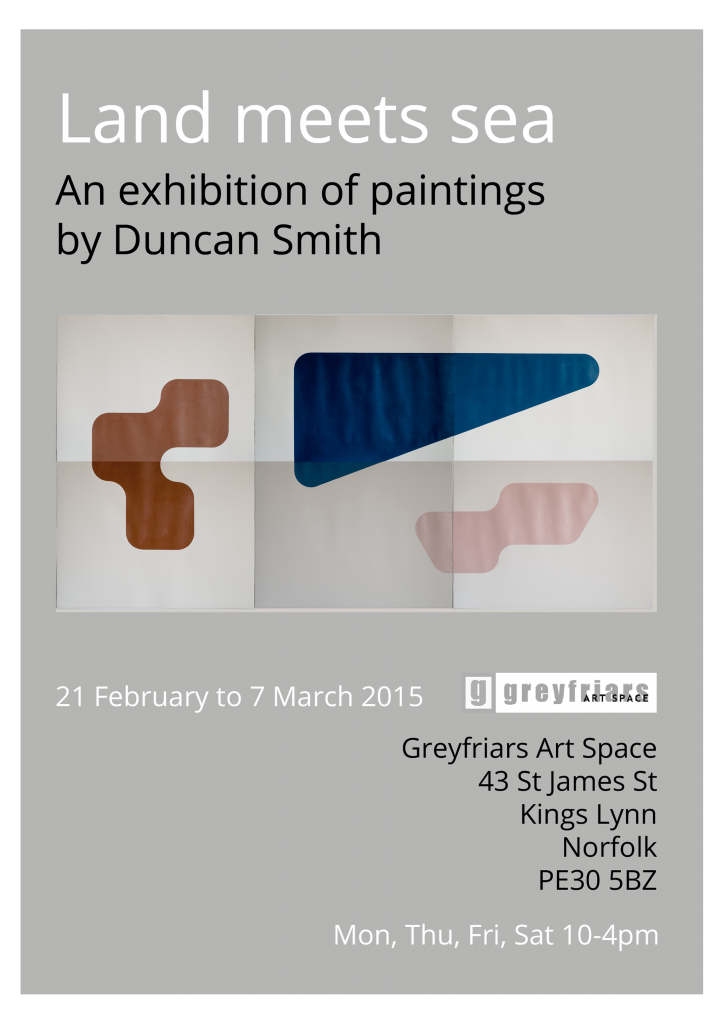Land meets sea 21 February – 7 March 2015

‘Land meets sea’ – 21 February – 7 March
An inspiring exhibition of paintings by Duncan Smith.
Opens 2-6 on Saturday 21 February, with an opening reception from 4-6pm.
The exhibition continues to be open: 23 February – 7 March on Mon, Thurs, Fri & Sat from 10-4pm
Everyone is welcome…Admission is free
Here are few words from Duncan about his work.
Visual thoughts:
‘My work presents pairs or groups of shapes in relation to each other, painted carefully on a paper or canvas ground. The shapes are drawn in pencil using a compass and straight-edge, and painted by hand.
The forms I start with are related in scale, geometry and colour, and I arrange them to form a kind of visual sentence, or statement. I then try to focus this initial visual idea to make a composition. Sometimes the results of this process begin to form a kind of vocabulary or forms.
I find that the shapes become interesting, partly through the basic principles of design, where a hard edge contrasts with a soft one, a curve with a sharp point, or where colours have a particular relationship that strike a chord of memory, atmosphere or a moment in time. They often suggest a real visual phenomenon such as the sea, or a landscape, or a particular object.
I have been influenced by the tradition of minimalism. The adage “less is more” has been very helpful to me because sometimes there is too much going on in an image, and I need to decide how to proceed. Its good to follow a simple, logical instruction: leave out what is not necessary. What is revealed after removing the “unnecessary”? Proximity, relationships, colour harmony or disharmony, negative spaces, the intended and the unintended. Sometimes humour.
The shapes speak to each other and they speak to the viewer, often suggesting multiple simultaneous objects. A tooth? A yacht’s sail? a chair, a head, a torso, skin, light, architecture, a body part. Yet they are clearly not representing any of these things, these interpretations are all in the mind and memory of the viewer.’
Duncan Smith
2015
